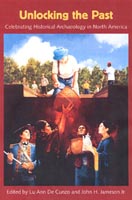Part 3: Building Cities: Tales of Many Cities

Cities across North America have sponsored urban archaeology programs built on partnerships among archaeologists, preservationists, planners, and the public. The programs highlighted here have themselves made history. All thrive on innovation and cooperation among government agencies, museums, universities, corporations, and non-profit organizations to achieve what any one group never could alone. William Moss directs the city archaeology program in Quebec, Canada. The United Nations has honored the city's distinctive historical character by designating Quebec the only World Heritage City in North America.
In New York, archaeologists like Diana Wall and Nan Rothschild have devoted their careers to the archaeology of one of the world's largest, most dynamic, and most complex cities.
In the shadow of the United States capital, Alexandrians pioneered the concept of "community archaeology" in Virginia, where Pamela Cressey and her team have created a model citywide program. In South Carolina, The Charleston Museum houses the city archaeology program in this gem of the American South.
Martha Zierden writes of their efforts to leaven our image of southern elegance and gracious antebellum life with a heavy dose of the daily realities shaping southern urban living.
At the other end of the transcontinental railroad in California, Mary Praetzellis and the team at the Anthropological Studies Center at Sonoma State University met the challenge of a single archaeological project that encompassed forty-three city blocks in West Oakland!
Projects in the Book
(Click on bold link to view an excerpt)- Quebec City, Canada - William Moss
- New York City - Diana diZerega Wall and Nan A. Rothschild
- Community Archaeology in Alexandria, Virginia - Pamela J. Cressey
- Urban Life in Colonial Charleston, South Carolina - Martha Zierden
- Sidebar 6: Archaeology of African Americans - Martha Zierden
- Sidebar 7: The Nathaniel Russell House Project - Martha Zierden
- “A Place to Start from”: West Oakland, California - Lu Ann De Cunzo and Mary Praetzellis
